Engagement Ring - In Progress
Setting
Stone
Purchase any Engagement Ring and receive a $250 Gift Card for your Wedding Band. Ends soon.
Deepen the well of love in the world.
Princess cut diamonds are square-shaped diamonds with lots of brilliance. Although Princess cut engagement rings are the second most popular shape in the world, they are still relatively rare. In fact, at the time of writing, only 4.9% of GIA-certified diamonds available for sale globally were Princess cut (58,726 out of 1,178,007 diamonds). Also known as “square modified brilliant” diamonds, the Princess was originally cut 50 years ago. You’re in luck if you have chosen a Princess – they are more affordable than classic Rounds!
Like other fancy cut diamonds, the GIA does not grade the cut quality of Princess cut diamonds. For this reason, couples should note that any jeweler who advertises GIA-certified Princess cut diamonds with cut grades is offering their own opinion. In other words, the accompanying GIA certificate will not list a cut grade.
If may surprise you to find out that there is also no industry standard for what constitutes an “Ideal Cut Princess Diamond.” However, there are certain specifications you can look for to help you choose the best, brightest Princess. We’ve put together a table below to help you evaluate cut.
The most lively and beautiful Princess cut diamonds have good play between light and dark when rocked back and forth (diamond experts call this “contrast”). Yes, that’s right, you want some darkness in your stone! The main things are that you want it to be even throughout (not only in the center or in the corners), and not make your overall stone too dark.
Here is an example of an ideally cut princess with even contrast and brilliance, as compared with a stone with uneven contrast and a washed out look.
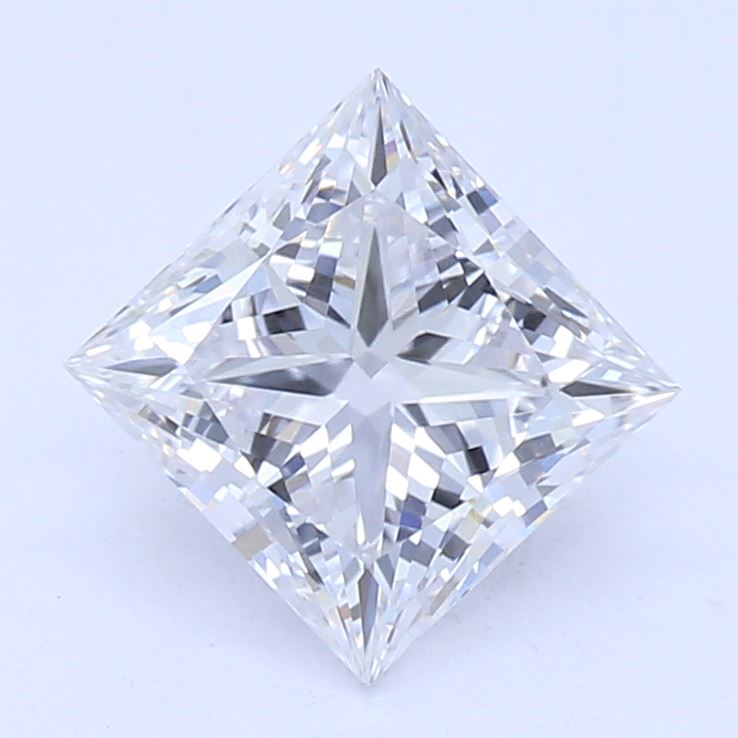
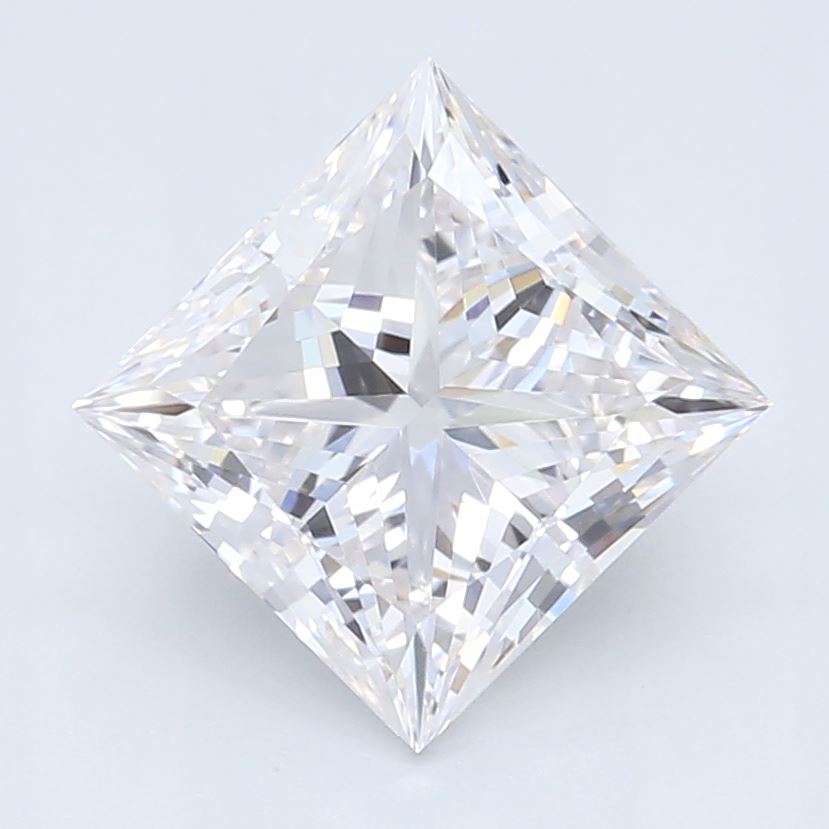
Here are our recommendations:
| IDEAL/EXCELLENT | PREMIUM | GOOD | |
| TABLE | 68 – 72 | 73-74 | 75+ |
| DEPTH | 68-73 | 74 | 75+ |
The color grade of a diamond refers to how much color (or lack of a color) a diamond shows. The diamond color scale begins at D and ends at Z. D, E, and F colors are “colorless,” like water. G-Z stones show varying degrees of light yellow. Because Princesses are “brilliant” stones, you can mask some color with great sparkle. As a result, near colorless Princesses in the G and H range will often still appear white while providing great value.
Like most diamonds, a smaller Princess cut will hide color better than a larger stone. So, if you want a large, ice white diamond, it is best to stick in the D-G color range. However, many couples find that they prefer an H or even I, depending upon size, as they cannot see much of a difference for the money. The color metal you choose also plays a role – warmer toned metals (like yellow and rose gold) hide diamond color, while white metals (like platinum, palladium, and white gold) will show more diamond color!
Here is an example of an E colored princess cut as compared with an I colored princess:
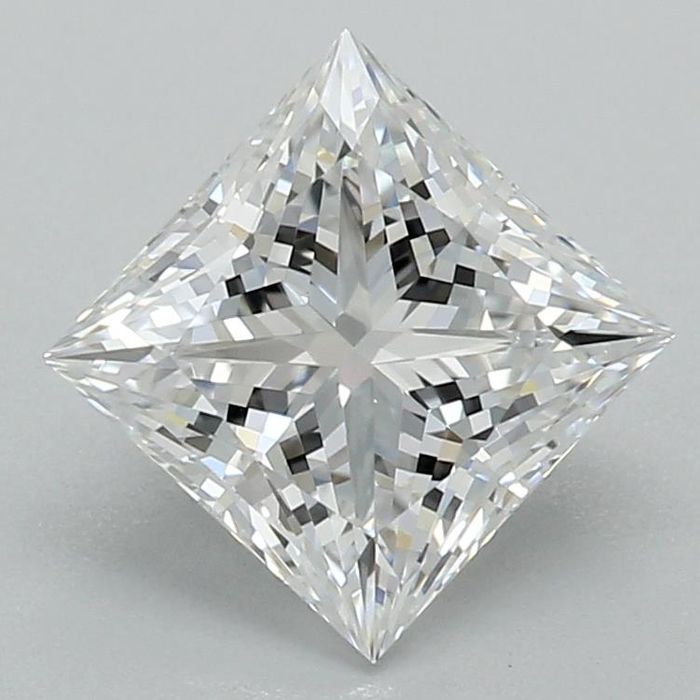
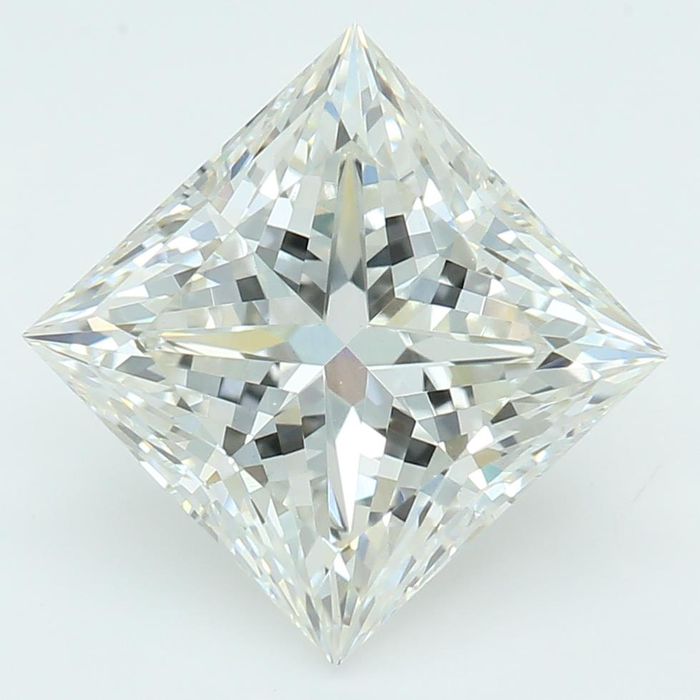
Here is what we recommend:
| WHITE METAL | YELLOW OR ROSE METAL | |
| >1ct | D-G | D-I |
| 1-2ct | D-G | D-H |
| 2+ct | D-F | D-G |
The clarity grade of a diamond is how “crystal clear” the gem is. Almost all diamonds have some internal markings, called “inclusions,” that identify them as natural. Most couples we speak with want an “eye clean” stone. In other words, a gem in which the inclusions are not visible to the naked eye. Eye clean stones are the best value! The fewer inclusions a diamond has, the more “flawless” it is. As it is harder to see inclusions on smaller Princess cut diamonds than larger ones, some couples consider lower clarity ratings on smaller diamonds, as they maintain an eye-clean appearance. Larger stones show inclusions more easily, so couples should take care in confirming eye-clean appearance. Luckily, because Princess cuts are “brilliant” stones, their sparkle masks small blemishes fairly well. The clarity chart below provides general guidelines for picking a clarity rating for your diamond, based on inclusion tolerance. Every time a customer purchases an engagement ring from us, we send a gemologist to confirm the diamond is “eye-clean.” We inform the customer if it isn’t.
Here is an example of an SI1 clarity princess cut next to a VVS2 clarity princess:
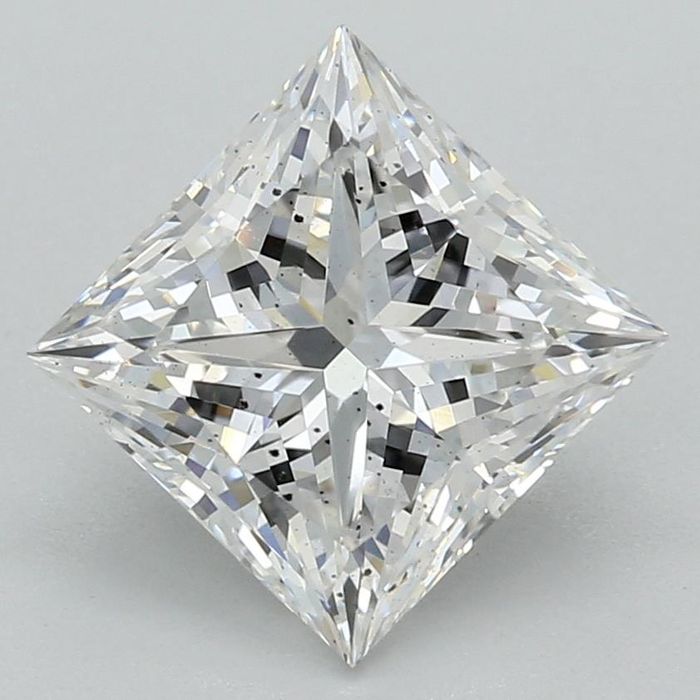
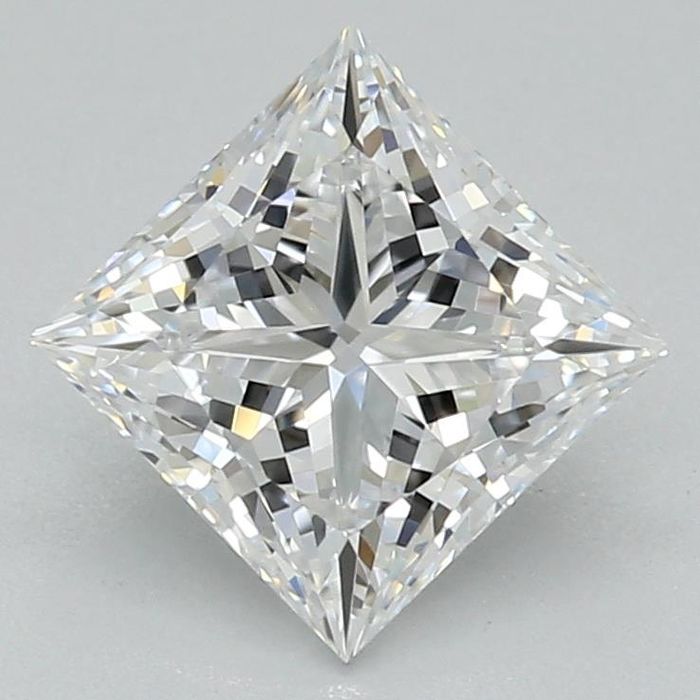
The following is what we recommend to our couples:
| CLARITY | |
| >1ct | SI1+ |
| 1-2ct | VS2+ |
| 2+ct | VS1+ |
All diamonds in our conflict free diamond search engine have their length to width ratio listed. This ratio, which is simply the length divided by the width, determines how close to a perfect square the diamond is. A diamond with a 1.00 ratio means the diamond is a perfect square. However, most people can’t tell if the diamond is a perfect square or not as long as the length to width ratio is 1.05 or less. Even trained gemologists can’t tell by looks alone as long as the length to width ratio is lower than 1.03. Are you able to tell in the images below?
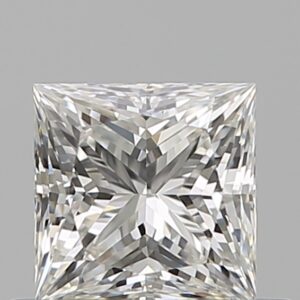
1.00
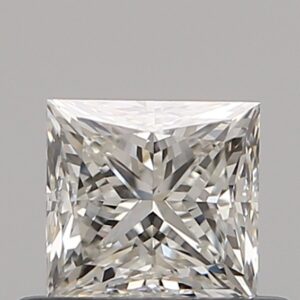
1.03
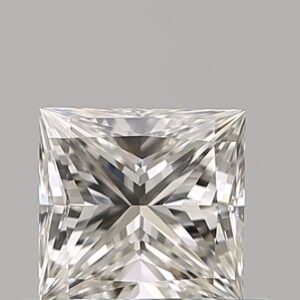
1.05
When looking for a Princess, make sure to always try to maximize measurements within your ideally cut diamond. For example, you can have a 1.0 carat Princess with the measurements of 5.40 x 5.30 mm that is ideally cut. But there could also be a 0.98 carat with measurements 5.50 x 5.40 mm that is just as ideally cut, and possibly less expensive. All of our “Recommended” conflict free diamonds maximize dimensions while maintaining ideal cut.
01.
Photo & Video - Always ask the jeweler you are buying from for a detailed picture or video. Confirm eye-clean appearance!
02.
Inspect It - Ask the jeweler to pull the diamond and actually visually inspect your diamond. Look for good contrast between light and dark when rocking the stone.
03.
Measure It - Make sure to maximize your diamond’s measurements for the greatest value.